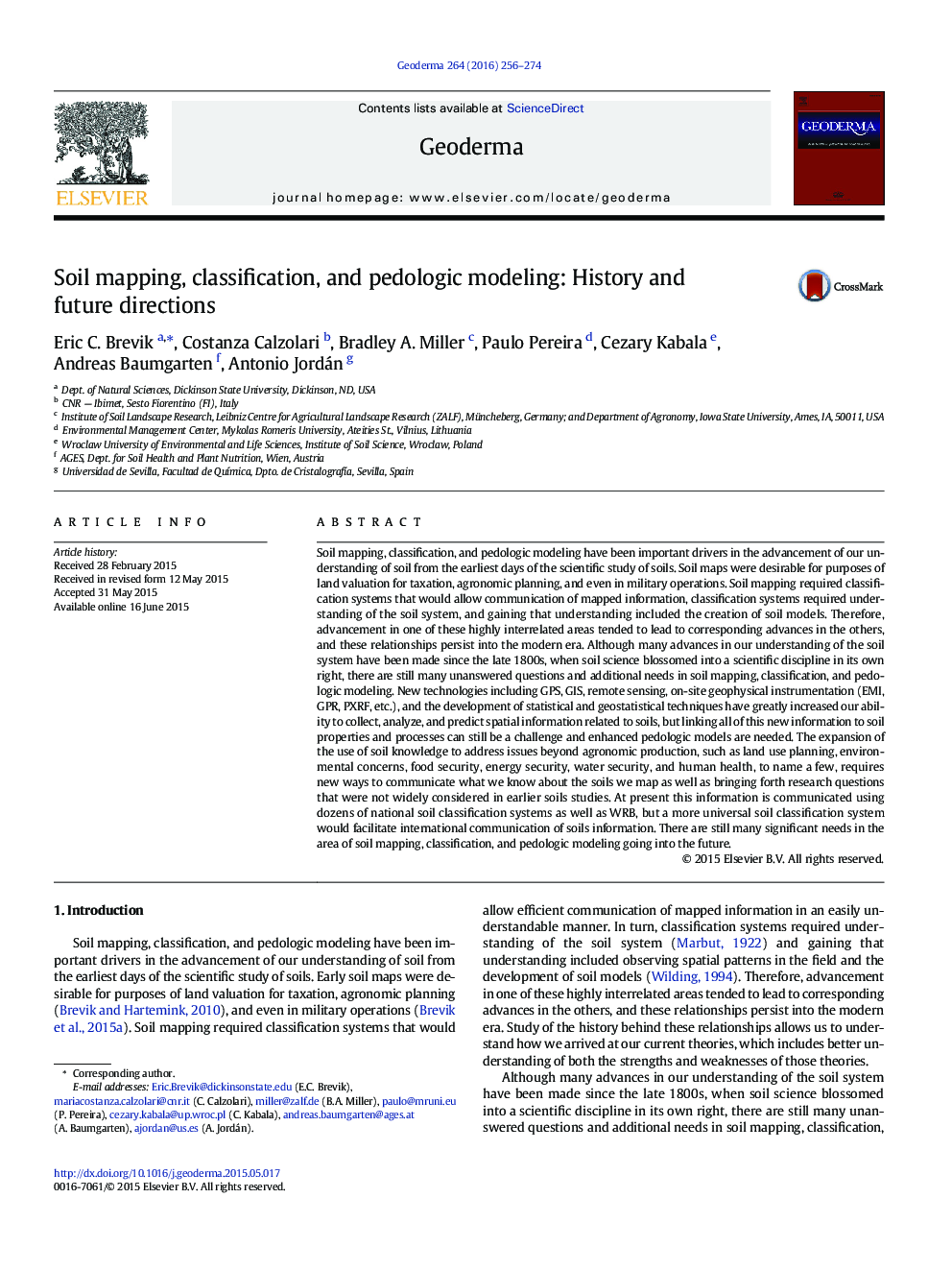| کد مقاله | کد نشریه | سال انتشار | مقاله انگلیسی | نسخه تمام متن |
|---|---|---|---|---|
| 4573107 | 1332419 | 2016 | 19 صفحه PDF | دانلود رایگان |
• Mapping, classification, and modeling help drive advanced understanding of soil.
• These are also highly interrelated activities.
• New tools and technologies have greatly increased understanding.
• Expanded use of knowledge beyond agriculture also requires advances in the field.
Soil mapping, classification, and pedologic modeling have been important drivers in the advancement of our understanding of soil from the earliest days of the scientific study of soils. Soil maps were desirable for purposes of land valuation for taxation, agronomic planning, and even in military operations. Soil mapping required classification systems that would allow communication of mapped information, classification systems required understanding of the soil system, and gaining that understanding included the creation of soil models. Therefore, advancement in one of these highly interrelated areas tended to lead to corresponding advances in the others, and these relationships persist into the modern era. Although many advances in our understanding of the soil system have been made since the late 1800s, when soil science blossomed into a scientific discipline in its own right, there are still many unanswered questions and additional needs in soil mapping, classification, and pedologic modeling. New technologies including GPS, GIS, remote sensing, on-site geophysical instrumentation (EMI, GPR, PXRF, etc.), and the development of statistical and geostatistical techniques have greatly increased our ability to collect, analyze, and predict spatial information related to soils, but linking all of this new information to soil properties and processes can still be a challenge and enhanced pedologic models are needed. The expansion of the use of soil knowledge to address issues beyond agronomic production, such as land use planning, environmental concerns, food security, energy security, water security, and human health, to name a few, requires new ways to communicate what we know about the soils we map as well as bringing forth research questions that were not widely considered in earlier soils studies. At present this information is communicated using dozens of national soil classification systems as well as WRB, but a more universal soil classification system would facilitate international communication of soils information. There are still many significant needs in the area of soil mapping, classification, and pedologic modeling going into the future.
Journal: Geoderma - Volume 264, Part B, 15 February 2016, Pages 256–274
